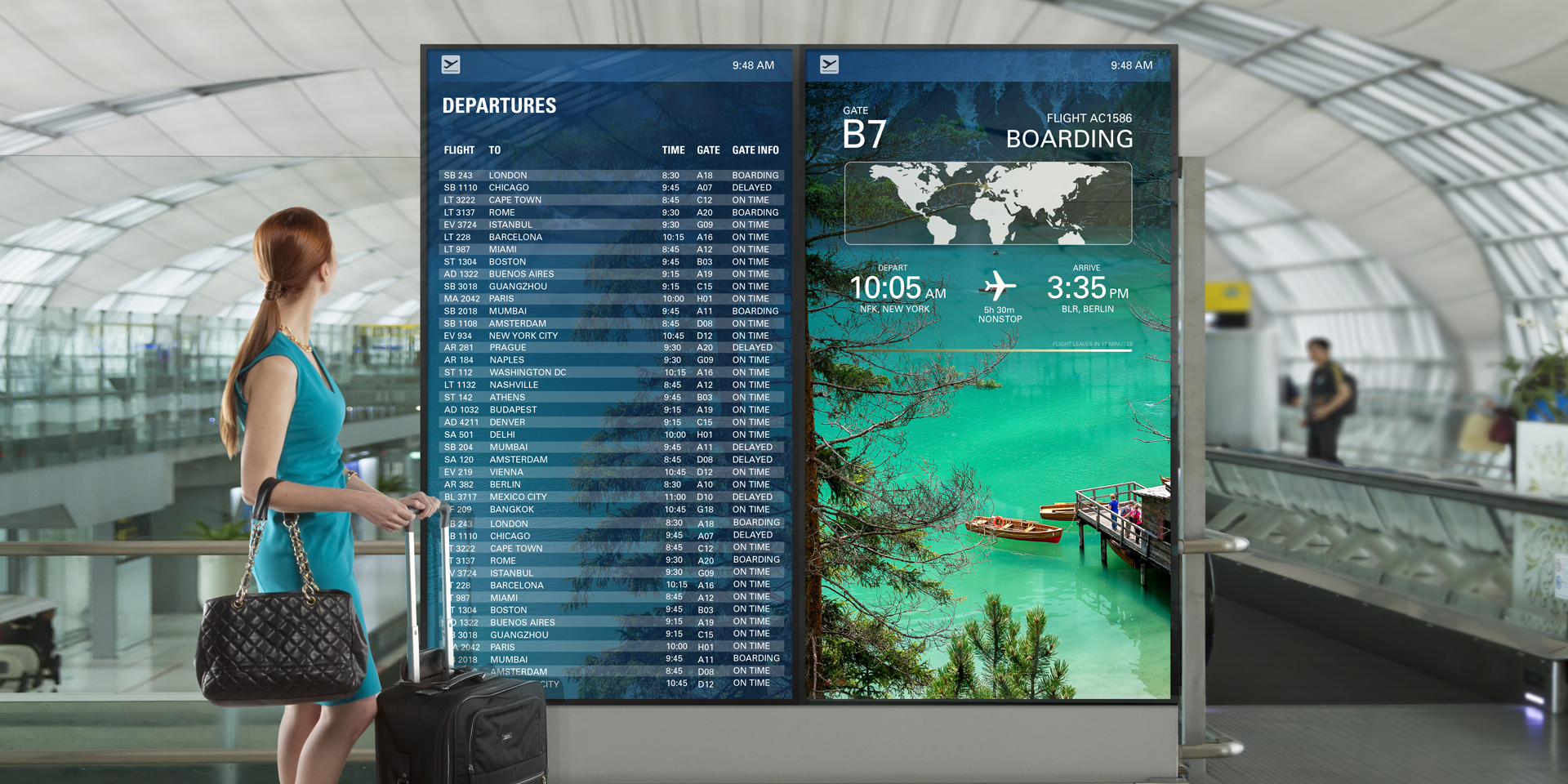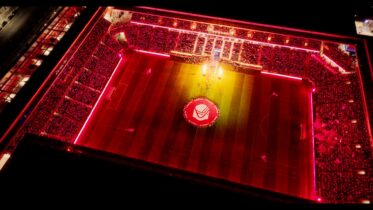When planning a digital signage deployment, cutting a few corners to save on entry costs can be tempting. Why shell out for commercial digital signage displays when far less expensive TVs are at your local big box store?
Here’s the short answer: TVs and monitors may look similar, but TVs aren’t suited to the operating demands of commercial digital signage displays. The true comparison between smart digital signage TVs and a smart TV lies in the details — deeper than the manufacturer and resolution. Here are the important differences to remember when choosing a digital display for your business.
Industrial and operating design
The operating time is the first difference between commercial digital signage and smart TVs. Professional displays such as Samsung Pro TV are engineered to run around the clock, seven days a week if needed. The TVs you plug in at home are designed for perhaps eight hours a day, after which they may suffer issues, such as “burn-in,” which leaves a visible mark on the screen.
Digital signage content management made easy
Get your complete guide to configuring and tailoring real-time messaging using an integrated CMS. Download Now
In addition, professional displays used in digital signage are often positioned in portrait mode — rotated 90 degrees so the displays sit tall and wide in a 9:16 orientation instead of the 16:9 mode almost every TV watcher uses today. They are designed to handle the differences in air flow caused by this rotation. Put a consumer TV in portrait mode, and it will eventually fail because the screens aren’t designed with vents and fans that can handle the extra heat.
Furthermore, a consumer TV’s warranty will be invalidated if it’s used for commercial purposes. If the TV breaks down, it’s the end user’s problem. Warranties are different, too. Most commercial displays ship with three-year warranties and may include on-site support, while consumer TV products typically ship with one-year protection.
Protected and enhanced controls
Commercial displays offer IT managers greater control and security. Most models have protected controls that are out of a passersby’s reach and lockout features that prevent mischief or mistakes — meaning someone with a spare remote control, for example, can’t mess with the store’s screens.
Professional displays also have several operating controls and commands that allow operators to disable certain modes and remotely force screens back on should they be turned off. With Samsung’s new cloud-based VXT content management system, operators can remotely create and distribute content across multiple displays in real time.
In comparison, consumer TVs ship with control buttons located along the enclosure’s edges. Those buttons are handy around the house when a remote goes missing or runs out of batteries. But making it too easy to fiddle with controls — changing inputs, raising the volume, turning off a display — can be a nightmare for a digital signage network operator.
For example, if a retailer’s store location uses a consumer TV as a display and it’s been switched off or its input changed, the central operators may not know for several hours — or days — and local staff may not be equipped to remedy the problem on their own.
Sufficient brightness
Lighting conditions are typically much brighter in retail and office environments than in homes. Commercial displays are specifically designed to operate in direct outdoor sunlight and come in a variety of brightness ratings.
While consumer TVs typically have brightness ratings of 250 nits and up to 400 nits for HDR-compatible displays for residential rooms with average natural light, commercial displays offer higher brightness levels, including some that are up to 10 times brighter, at 2,500 nits. Many commercial panels also feature anti-glare technology designed to absorb or redirect external light in bright conditions. TVs used as digital signage are often overpowered by glare, making the on-screen content difficult to see.
The Wall All-in-One, a video wall made up of microLEDs, further enhances the brightness and clarity with glare-reducing technology and a pure black background, so every color pops. These commercial displays ensure your brand’s message stays visible and vibrant in any lighting.
Form factor
Digital signage operators generally look for rugged displays with fingerprint-resistant finishes, consistent design and super-slim bezels — which allow multiple displays to be arrayed into a video wall or menu board. Commercial displays are designed with this in mind, and their dimensions stay consistent throughout a product series. So if you want to add another display in a couple of years, it’s easy to add a new one while maintaining a consistent overall appearance.
In contrast, residential TVs are designed to look good sitting on a credenza or hung on a feature wall, with glossy finishes and, in many cases, frames thick enough to highlight the manufacturer’s logo. The thicker frames result in large seams and grid lines, while commercial displays designed with video walls in mind minimize these seams. In addition, while designs for commercial displays stay consistent, the chassis design for consumer TVs can change frequently, and the material is only sturdy enough to handle the expected light use around a home.
There are also various touchscreen commercial displays on the market, allowing retailers to create more engaging, interactive customer journeys.
Connectors and inputs
Because commercial displays often carry a heavier load than home TVs, they require a broader and more diverse set of connectors and inputs. In homes, consumers might have TV cables plugged into a cable box, a separate streaming device and maybe a gaming console — and that’s likely all they’ll ever need. In comparison, commercial displays may include an RS232C serial connector that allows a media playback device, like a PC, to fully interface with and issue commands to the display. In some cases, the screens will have built-in Wi-Fi and Ethernet ports.
Smart signage embeds an intelligent media player device inside the display, too. That eliminates the added cost of an external media player while simplifying installation and reducing the ongoing operating costs for digital signage projects because the absence of external devices and cables minimizes the possible points of failure.
Smart signage vs. smart TVs
First-time digital signage network operators with limited or no experience understandably want to control capital costs tightly, and one of the big-ticket items is screens. Going with a consumer TV over a professional display will almost always mean less upfront cost, but the true costs will be much higher down the road.
Once you know the full story, the difference between consumer TVs and professional digital signage is obvious: Cut a few corners at the outset, and your whole project will eventually end up on the floor. Investing in the right technology now will ensure your digital signage draws eyes for years to come.
Prepare for your digital signage deployment by exploring Samsung’s full line of professional display solutions. And explore how your business can harness the power of data with integrated tech to elevate any in-store experience.









